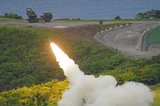easyJet continues passenger growth in February
easyJet has reported its passenger and load factors figures for February 2010 and the rolling 12-month to the end of February.
During the month the airline carried 3,390,523 passengers, 12.3% more than the 3,018,910 carried last February. The load factor, however, dropped by 1,7 percentage points to 85.3% from 87.0% in the same month last year.
For the rolling 12 month period ending 28 February 2010, easyJet carried 46,752,084 passengers, an increase of 5.2% over the 44,439,653 carried in the 12 month period to the end of February 2009. The load factors for the respective periods were 86.1% and 85.1%, thus showing a 1.0 pp rise in the most recent period.























